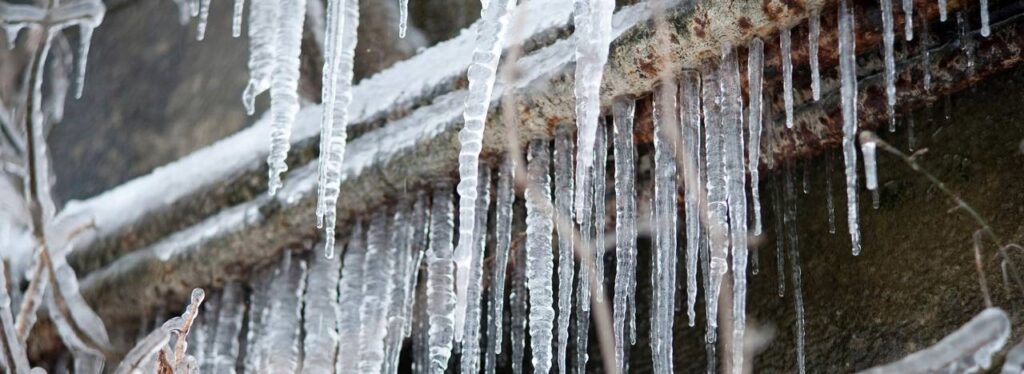How to Keep Your Pipes from Freezing Damage: Important Tips
How to Keep Your Pipes from Freezing Damage: Important Tips
Blog Article
Everybody is bound to have his or her own concepts with regards to 6 Ways to Prevent Frozen Pipes.

Cold weather can damage your plumbing, specifically by freezing pipelines. Right here's exactly how to avoid it from occurring and what to do if it does.
Introduction
As temperature levels decline, the danger of frozen pipelines increases, potentially bring about pricey repair services and water damage. Recognizing exactly how to prevent icy pipes is important for property owners in cold environments.
Prevention Tips
Protecting vulnerable pipelines
Wrap pipelines in insulation sleeves or make use of warm tape to shield them from freezing temperature levels. Focus on pipelines in unheated or exterior areas of the home.
Home heating methods
Maintain indoor rooms adequately heated, especially areas with plumbing. Open cabinet doors to enable warm air to circulate around pipelines under sinks.
How to identify frozen pipes
Look for decreased water flow from faucets, uncommon odors or sounds from pipelines, and visible frost on exposed pipes.
Long-Term Solutions
Structural adjustments
Consider rerouting pipelines away from exterior wall surfaces or unheated areas. Include added insulation to attics, cellars, and crawl spaces.
Updating insulation
Purchase top notch insulation for pipes, attics, and wall surfaces. Correct insulation helps maintain constant temperature levels and reduces the risk of frozen pipes.
Safeguarding Outside Plumbing
Garden pipes and outside faucets
Disconnect and drain yard hose pipes before winter season. Install frost-proof spigots or cover outdoor faucets with insulated caps.
Understanding Frozen Pipes
What triggers pipes to ice up?
Pipelines freeze when revealed to temperatures below 32 ° F (0 ° C) for extended durations. As water inside the pipes freezes, it broadens, taxing the pipe wall surfaces and potentially creating them to break.
Threats and damages
Icy pipes can result in supply of water disruptions, home damages, and costly fixings. Burst pipelines can flooding homes and create extensive architectural damages.
Indicators of Frozen Water Lines
Recognizing icy pipes early can avoid them from rupturing.
What to Do If Your Pipelines Freeze
Immediate actions to take
If you suspect icy pipelines, maintain taps open up to alleviate stress as the ice melts. Utilize a hairdryer or towels taken in warm water to thaw pipes gradually.
Verdict
Avoiding frozen pipelines requires aggressive steps and fast actions. By understanding the causes, indications, and safety nets, property owners can shield their pipes throughout cold weather.
5 Ways to Prevent Frozen Pipes
Drain Outdoor Faucets and Disconnect Hoses
First, close the shut-off valve that controls the flow of water in the pipe to your outdoor faucet. Then, head outside to disconnect and drain your hose and open the outdoor faucet to allow the water to completely drain out of the line. Turn off the faucet when done. Finally, head back to the shut-off valve and drain the remaining water inside the pipe into a bucket or container. Additionally, if you have a home irrigation system, you should consider hiring an expert to clear the system of water each year.
Insulate Pipes
One of the best and most cost-effective methods for preventing frozen water pipes is to wrap your pipes with insulation. This is especially important for areas in your home that aren’t exposed to heat, such as an attic. We suggest using foam sleeves, which can typically be found at your local hardware store.
Keep Heat Running at 65
Your pipes are located inside your walls, and the temperature there is much colder than the rest of the house. To prevent your pipes from freezing, The Insurance Information Institute suggests that you keep your home heated to at least 65 degrees, even when traveling. You may want to invest in smart devices that can keep an eye on the temperature in your home while you’re away.
Leave Water Dripping
Moving water — even a small trickle — can prevent ice from forming inside your pipes. When freezing temps are imminent, start a drip of water from all faucets that serve exposed pipes. Leaving a few faucets running will also help relieve pressure inside the pipes and help prevent a rupture if the water inside freezes.
Open Cupboard Doors
Warm your kitchen and bathroom pipes by opening cupboards and vanities. You should also leave your interior doors ajar to help warm air circulate evenly throughout your home.

As a reader about Helpful Tips to Prevent Frozen Pipes this Winter, I thought sharing that editorial was necessary. Sharing is good. One never knows, you may just be helping someone out. Thanks so much for taking the time to read it.
Visit Homepage Report this page